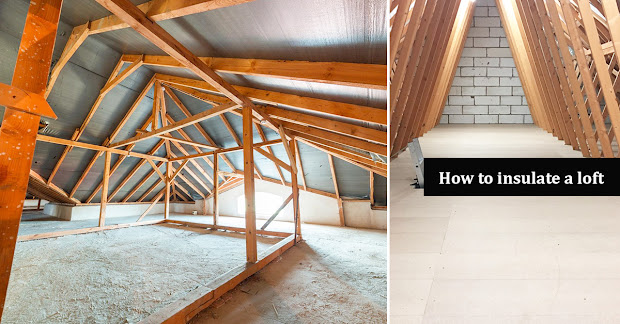How to insulate a loft
If you want to insulate your loft but are unsure of where to begin or how to do it right, don't worry; after reading this article, you will know which insulation technique is ideal for you. Additionally, you will be aware of the ideal insulation material for your loft.
We all live in different surroundings, so it will be crucial that you carefully understand the various Loft Insulation ways so that you can ultimately decide which approach is best for you. The loft insulation method with the highest R-value should always be taken into consideration if you are unsure of the appropriate material to choose.
Blanket
and rolls
Blankets and rolls are relatively cheap insulation materials that are made from glass fiber. This kind of insulation is designed to fit above and between joists, roof trusses, and even within walls. They are easier to install and that is what makes them the best to deal with.
The
role needs to be cut to the right width and length to ensure that it fits
correctly. This can be done with a knife so it isn’t any hard. The R-value for
this insulation is between 2.9 and 3.8. this type of insulation is ideal for
homeowners who want to use their loft insulation for storage purposes.
Spray
foam
This
type of insulation is sprayed onto the underside of the rafters and it will
seal all the air leaks and gaps on your roof. This is a liquid polyurethane that
expands and solidifies into a solid after it is sprayed. Open-cell foam has an
R-value of 3.7 while closed-cell has an R-value of 6.2.
This
method of insulation is best for homes because it is more effective in
preventing heat from being lost in the house. Spray foam insulation is the
best for good quality insulation but it comes at a price it needs to be
installed by a professional. Where should I fit the insulation when insulating
my loft/ you may ask. Well, a professional will do that for you. Also, your
answer to; how should I fix insulation materials between rafters: a how-to guide
will be given to you by a professional.
Blow-in
Blown-in material is made of paper-like material that is made of fiberglass that is mixed with newspapers and cardboard. Installing the blow-in insulation is easy because all you have to do is blow it in the required space and that’s all. The R-value for this type of insulation is between 2.2 and 3.8. Though installation is quite easy, you will have to rent specialist equipment and after installing it blow-in, you will not be able to use your loft for storage.
Loose-fill
Quite similar to blown fiber, this insulation uses loose, material that is lightweight such as cellulose fiber, cork granules, cellulose recycled newspaper, or mineral wool. Installation is easy but you will need the right equipment to spray it evenly. The R-value for this insulation is not correctly determined and so is its thermal performance. Once it's laid down, it's prone to movement.
Board
and panels
Form
boards and foam panels are effective for insulation because they reduce the
loss of heat through conduction through the walls and the roof. This capability
makes them a good option whenever you want to convert Loft Insulation Costs from a loft to
a habitable room. Installation of brads and panels is easy because all you have
to do is fix them on the walls and roof. The R-value of Boards and panels is
between 4.0 and 6.0.




Comments
Post a Comment